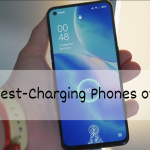he FBI in the US has issued a critical warning about the risk of people losing sensitive data or credentials via their mobile phones. How is that possible? Remember those free charging stations? Those are the culprits! The term “juice jacking” is trending among users these days.
So, what is ‘juice jacking’? It’s a widespread practice among hackers and data thieves who exploit insecure charging stations in airports or bus stands. This issue has been increasingly reported in Australia.
The University of Technology Sydney has warned its students and the people of Australia about free charging docks installed at different locations. While these free charging docks are a blessing upfront, they are a means to bypass phone security and gain access to personal data, which can be used in any way possible. With cybercriminals being super active these days to get their hands on any data that they can exploit, this phenomenon has become very common as people are complaining that they have faced some issues regarding their credentials being stolen.
The term “juice jacking” was first coined in 2011 when it was taken into notice by many people who faced the same issue of theft and identity problems. Ritesg Chugh (Associate Professor), a technology and Society expert working at Central Queensland University, stated that any public charging station was a “significant privacy hazard.” His statement is backed by recent studies that found that it was possible to access your mobile phone in less than a minute during the charging process. You will not even notice that something fishy is happening with your mobile phone. Isn’t this an alarming issue?

The million-dollar question is, ‘How does a charging station hack into your phone?’ It’s shockingly simple! The hacker gains access to the charging station by simply connecting his device to it. Malicious software is then pre-installed on the charging station. Anyone who connects their phone to the charging station with the intention of topping their battery can fall victim to this cyber mugging. This process is not just limited to a charging station but is also rooted in many other types of connectivity. So, be careful where you charge your phone and how you do it!
In 2020, the Australian Cyber Security Centre (ACSC) issued a notice about a new type of juice jacking method that was targeting Android devices. The technique consisted of the use of a malicious USB cable to install malware on your devices, which could easily steal personal data or credentials that could give access to your bank accounts to the hacker. Just plugging your phone into a random cable on some docking station could cost you your life savings!
Many experts have given hints on how to identify potential security risks when connecting to these malware-loaded cables or devices. A message pop-up stating “Do you trust this computer?” is the main giveaway that identifies your phone or any other smart device being juice jacked. Tech experts and cyber security experts have advised that “Anything that is not your home computer should always be avoided, or the answer should be ‘no’ for such prompts.” Giving free access to your device to any random app, network, or human-accessible source is a major alarm for mobile phone users, especially if you are an Android user.










